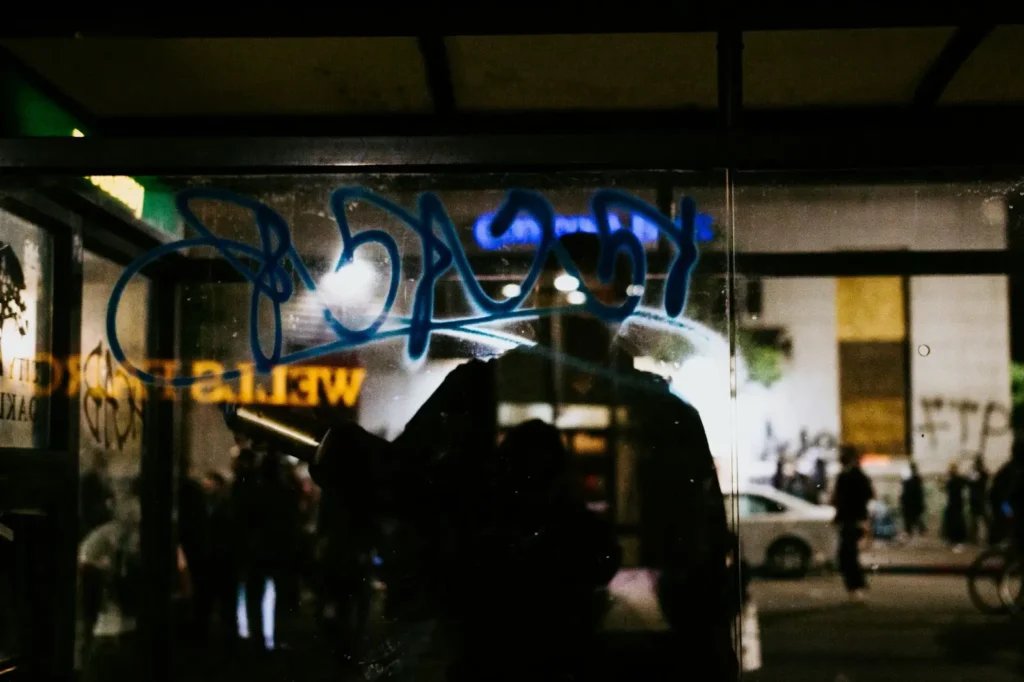Written By: Brad Campbell | September 27, 2024
Forced entry, rioting and looting, active threats — these are all major dangers to high-risk buildings, including certain types of commercial, government, and military facilities.
Installing forced entry-resistant doors and windows can help mitigate these threats, but it’s important to understand the capabilities and limitations of the many different types of forced entry resistance ratings and testing standards out there.
One of the most robust forced entry resistance tests is the ASTM F3038 standard, which outlines the test method for evaluating the forced-entry resistance of building components and security systems.
Understanding exactly what passing the ASTM F3038 forced entry test means can help building owners, managers, and security professionals evaluate when using materials with this certification might be justified.

The ASTM F3038-21 is officially a “Standard Test Method for Timed Evaluation of Forced-Entry-Resistant Systems.” In other words, it is a method designed to evaluate how well building components can withstand forced entry attempts within a specified time frame.
Note that the number at the end of the test’s full name, the “21,” indicates how recently the testing standards were updated. In this case, it means that they were updated in 2021.
This test is crucial for assessing the forced-entry resistance characteristics of materials intended to protect against unauthorized entry in high-risk commercial buildings and facilities.
The F3038 test assesses the effectiveness of various tools and devices that might be used in an attempt to forcibly enter a structure. The range of tools considered can vary, but they generally include readily available hand tools, simulating a spontaneous mob scenario.
The test also takes into account the number of individuals attempting to breach the structure. This variable is critical, as it affects the complexity, duration, and overall intensity of the forced entry attempt.
Lastly, the F3038 test evaluates the sophistication level of the attack, including the techniques and methods employed by the aggressors. This aspect is crucial to understanding the real-world applicability of the test results.

The F3038 standard is not intended to guarantee absolute prevention of forced entry, but provides a reliable measure to evaluate the time it takes to create an opening sufficient for an intruder to gain access. The standard is particularly significant for:
The scope of ASTM F3038-21 forced entry testing encompasses a broad range of building components and security products, including but not limited to:
The systems must be tested as complete units in a test frame or under field conditions to accurately simulate real-world scenarios. For instance, security window framing and glazing must be tested in a test frame that simulates how it would be installed in a real-life building.
For a product to receive a rating, all portions of the tested specimen must meet or exceed the specified test level. This ensures uniform protection across the entire component.
Once a system is tested and deemed to satisfy the requirements, no design changes can be made without a retest. This ensures that the integrity and resistance of the system remain consistent.
Materials and systems meeting the ASTM F3038-21 forced entry testing standard are widely used by various government agencies and other high-security institutions. These include high-security government buildings, embassies, and military installations.
Additionally, the US State Department has specific standards for forced entry resistance that align closely with ASTM F3038-21.
Other organizations, such as hospitals, schools, and commercial entities, may also utilize these materials to improve their security measures and protect against forced entry, especially during civil unrest or active threat scenarios.

There are many forced entry resistance tests out there that can be used to certify commercial windows and doors for use in high-risk applications, but the ASTM F3038 is one of the most rigorous and effective.
By implementing security framing, sub-framing, or glazing that has passed a F3038 forced entry test, building owners, managers, and security professionals can rest assured that their facility’s most vulnerable potential entry points are highly secured against unauthorized access.
Contact Riot Glass today for more information on how we can help you secure your property against forced entry, civil unrest, and active threats using our retrofit fenestration security solutions.

HOW CAN WE HELP YOU?
